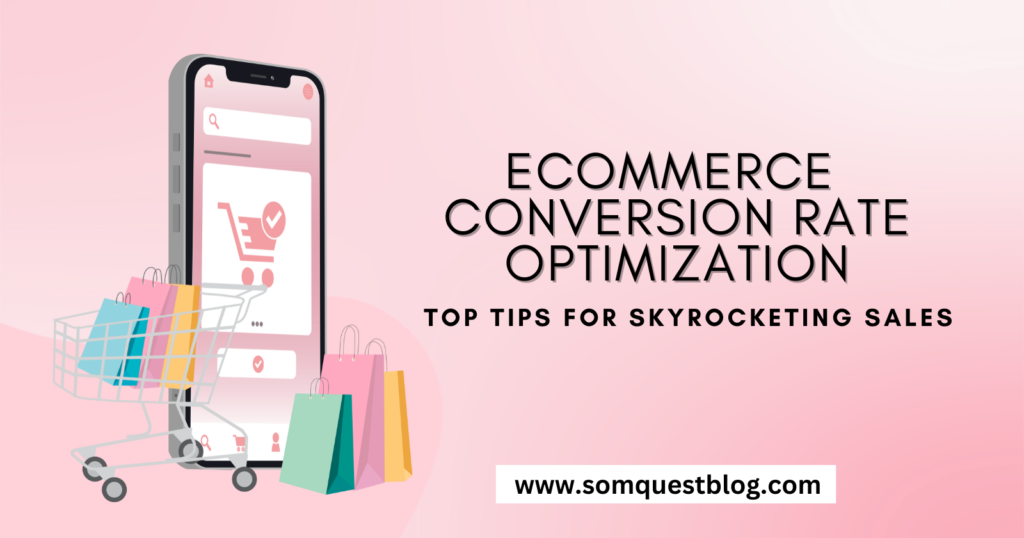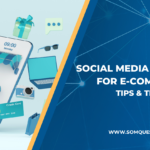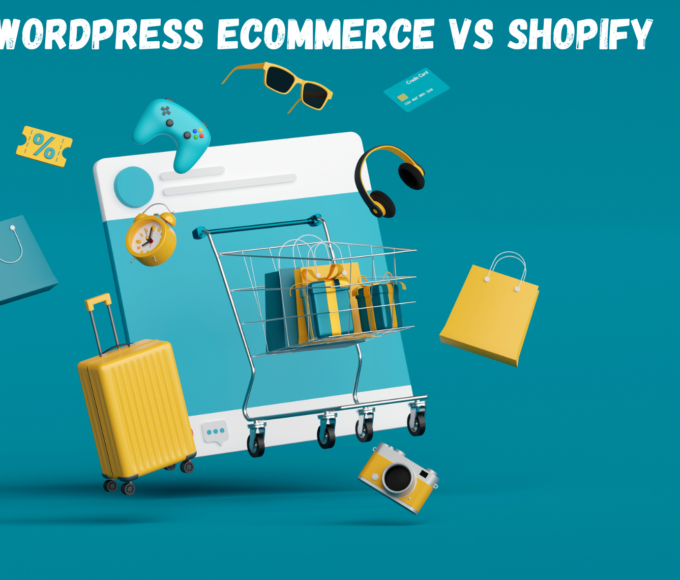In the ever-evolving world of ecommerce, it’s crucial to stay ahead of the competition by providing a seamless and satisfying user experience. One key aspect of this is ecommerce conversion rate optimization (CRO). By focusing on CRO, you can make the most of your site’s traffic and turn more visitors into customers.
Ecommerce conversion rate optimization is all about making small, yet impactful changes to your website that enhance its usability and appeal to potential customers. These improvements can result in a natural increase in conversions and significantly benefit your business’s bottom line.
As you embark on your CRO journey, you’ll want to stay informed about the latest strategies and best practices. By taking a proactive approach and regularly evaluating your site’s performance, you can unlock its full potential in no time. And remember, a strong focus on user experience will always be the key to success in ecommerce.
Table of Contents
Understanding Ecommerce Conversion Rate
Ecommerce conversion rate (CVR) is an essential metric to gauge the performance of your online store. It tells you the percentage of visitors who take a specific action, such as making a purchase, signing up for a newsletter, or filling out a contact form.
A good CVR can vary depending on the industry, but a general benchmark to aim for is around 2%. For example, a Shopify survey in July 2021 revealed an average conversion rate of 2.1%.
To analyse your ecommerce conversion rate, simply divide the number of conversions by the total number of visitors, and then multiply that number by 100 to get the percentage. For instance, if you received 200 conversions from 10,000 visitors, your CVR would be:
(200 / 10,000) * 100 = 2%
Improving your ecommerce conversion rate can significantly impact your sales and revenue. One effective approach to achieve this is through conversion rate optimization (CRO). This process involves implementing small, but impactful improvements to your website’s user experience (UX), which will naturally increase conversions.
To increase ecommerce sales, you must focus on CRO techniques such as A/B testing, user feedback, improving site speed, personalization, and simplifying the checkout process. By continuously analysing your website’s performance, you can identify areas that need improvement, and make data-driven decisions to enhance your conversion rate.
Remember, improving your ecommerce conversion rate is an ongoing process. As you make changes, track the results to see how they impact your CVR and continue to make adjustments as needed. By creating a seamless shopping experience for your customers, you’ll keep them coming back, ultimately boosting your business’s growth.
How can I improve ecommerce customer satisfaction?
To enhance ecommerce customer satisfaction, focus on providing excellent customer support, ensuring prompt order fulfillment and delivery, simplifying the returns process, and actively seeking and acting upon customer feedback. Personalization and loyalty programs can also contribute to higher satisfaction levels.
Importance of Conversion Rate Optimisation
Impacting Customer Satisfaction
Conversion Rate Optimisation (CRO) is a crucial aspect of ecommerce, as it helps in scaling revenues and improving customer satisfaction. By implementing the best practices for ecommerce conversion rate optimisation, you can significantly enhance your online store’s performance.
One of the key aspects of CRO is identifying areas where your customers might be facing difficulties or getting stuck. By resolving these issues, you can ensure a smoother and more satisfying user experience. To do this, you can:
- Use analytics data: Monitor your website’s analytics to determine areas that require improvement, like high bounce rates or low conversion rates.
- Optimise site speed: A slow website can frustrate users and lead to lower conversion rates. Ensure your site is running smoothly by optimising images, using caching, and leveraging content delivery networks (CDNs).
In order to increase ecommerce sales, it’s essential to adhere to the ecommerce SEO best practices. This involves optimising your website for popular search engines like Google to improve online visibility, which can lead to more traffic and sales.
Another approach to improve customer satisfaction is focusing on your website’s overall design and functionality. Here are some suggestions to create a user-friendly experience:
- Improve navigation: Ensure that your website is easy to navigate, with clear menus, categories, and internal search features.
- Emphasise security: Users should feel safe when making a purchase on your site, so use trust symbols and secure payment options.
By incorporating these strategies, you can effectively improve your ecommerce conversion rate optimisation efforts, ultimately leading to increased customer satisfaction and higher sales. Remember to keep monitoring your website’s performance, as CRO is an ongoing process that requires regular attention and updates.
How do I build trust with ecommerce customers?
Building trust with ecommerce customers involves using secure payment options, displaying trust badges, offering transparent pricing and policies, protecting customer data, and providing authentic customer reviews and testimonials. Effective communication and delivering on promises are also essential for building trust.
Methods of Optimising Ecommerce Conversion Rates

Optimising your ecommerce conversion rate can significantly improve your business performance. By following these friendly tips, you can boost your site’s conversion rate and ultimately increase ecommerce sales.
Firstly, understanding your customers is pivotal in converting them into sales. Conduct thorough customer research to identify their preferences, needs, and behaviours online. This will provide invaluable insight into how to optimise your website, user experience, and promotional strategies to meet their demands.
One effective method for capturing leads is by adding lead flows on your blog or site’s content. High-converting lead flows such as slide-in boxes, drop-down banners, or pop-up boxes attract attention and create value for your potential customers.
To enhance user experience, make your website visually appealing, easy to navigate, and optimised for mobile devices. Ensuring fast and responsive site performance contributes to positive user interaction and higher conversion rates. Streamline your website’s layout; utilise clear calls-to-action and minimalistic design elements to keep your users focused on making a purchase.
Consider implementing personalised marketing strategies, like email marketing, retargeting ads, and personalised product recommendations, which help foster customer relationships. Tailor your promotional content by utilising customer data to deliver personalised and targeted messages catered to individual needs.
Finally, consistently test and iterate your site’s features, layout, and promotional strategies. A/B testing and data analysis are crucial in identifying areas of improvement and refining your website’s conversion optimisation.
By implementing these ecommerce conversion rate optimisation strategies, you will see growth in your online sales and the overall success of your ecommerce business. Keep the user experience in mind and always seek ways to further enhance it for your customers.
7 Ways Sellfy Makes E-Commerce Easier: Watch this amazing video
Building Customer Trust in Ecommerce
Building trust with your ecommerce customers is key to improving conversion rates and fostering long-term loyalty. Here are some strategies on how to build trust with ecommerce customers:
1. Improve website speed: A fast-loading website demonstrates professionalism and efficiency. Customers are more likely to trust an ecommerce site that loads quickly and doesn’t keep them waiting.
2. Convey your unique selling proposition (USP): Clearly communicate the benefits of shopping with you. What sets you apart from the competition? This could be anything from exclusive products, competitive prices, or exceptional customer service.
3. Create a secure shopping experience: Customers want to know their personal and financial information is safe. Use HTTPS encryption and display trust badges from reputable security providers.
4. Offer a user-friendly navigation: Make it easy for customers to find the products and information they need. Well-organized menus, helpful search functions, and intuitive site design can help build trust.
5. Build social proof: Showcasing positive reviews, testimonials, or case studies can offer reassurance to potential customers. Additionally, featuring social media mentions or displaying logos of well-known clients can boost your credibility.
6. Provide clear and helpful customer support: Customers value assistance before, during, and after a purchase. Offering multiple contact options (such as live chat, email, and telephone) and creating a comprehensive FAQ section can encourage trust.
7. Share your company story: Humanise your brand by sharing your mission, history, and the people behind the business. A genuine and relatable story can help build an emotional connection with customers.
By following these strategies, you can create a trusting environment for your customers, leading to increased conversions and lasting relationships.
How to increase ecommerce sales?
To increase ecommerce sales, consider optimizing your website for a better user experience, offering discounts and promotions strategically, implementing personalization, streamlining the checkout process, and utilizing digital marketing strategies such as SEO, SEM, and email marketing.
What are the best practices for ecommerce conversion rate optimization (CRO)?
Some key best practices for ecommerce conversion rate optimization include improving website design and navigation, using high-quality product images and descriptions, implementing clear calls to action, offering secure and diverse payment options, and analyzing data for continuous improvement.
Practical Tips for Ecommerce Conversion Rate Optimisation

Looking to increase your ecommerce sales? Fret not! In this section, you’ll find friendly advice on how to optimise your ecommerce conversion rate using the best practices.
Firstly, simplify your website navigation. Ensure your site offers a logical, tiered hierarchy down to the product level. Intuitive navigation helps guide potential customers through your online store, keeping them engaged and more likely to make a purchase1.
Additionally, utilise analytics2 to set benchmarks and run conversion rate optimisation (CRO) tests. This enables you to make data-driven decisions and pinpoint areas that require improvement. Keeping a close eye on your website analytics will help you get the most out of your CRO efforts.
Moreover, make sure you optimize your site for mobile users. Nowadays, a significant proportion of ecommerce purchases are made on mobile devices. Ensure that your site is responsive and provides a seamless user experience across all screen sizes.
In terms of website design, aim for a clean and attractive layout that highlights your products. High-quality images, ample white space, and uncluttered presentation make for a pleasant browsing experience, which ultimately leads to higher conversion rates.
Another tip worth considering is to offer several payment options3. Providing customers with a range of payment methods caters to their individual preferences and helps to instil trust in your ecommerce platform.
Optimise product descriptions and titles to not only attract customers but also improve your website’s search engine rankings. Accurate, keyword-rich product listings go a long way in driving organic traffic and ultimately increasing sales.
Lastly, don’t forget to implement a user-friendly checkout process4. A smooth and efficient checkout experience is key to reducing cart abandonment and boosting conversion rates. Making it easy for customers to complete their purchase will ultimately lead to higher ecommerce sales.
In a nutshell, focusing on the small yet impactful aspects of your website and user experience is crucial to optimising your ecommerce conversion rate and growing your online business.
Frequently Asked Questions
What are the best tools for improving eCommerce conversion rates?
There are various tools available to help you improve your eCommerce conversion rates. Some popular options include Google Analytics for tracking visitor behaviour and trends, Hotjar for creating heatmaps and understanding user interactions, and Optimizely for A/B testing different design and content changes.
How can I calculate my online store’s conversion rate?
To calculate your online store’s conversion rate, divide the number of completed transactions (e.g., sales or sign-ups) by the total number of visitors to your site. Then, multiply the result by 100 to get the conversion rate percentage. For example, if your site had 200 visitors and 10 sales, the conversion rate would be (10/200) * 100 = 5%.
What is the average conversion rate in my industry?
Average conversion rates can vary widely depending on your industry and other factors, such as audience demographics and marketing strategies. You can find industry-specific conversion rate benchmarks in resources like the Monetate Ecommerce Quarterly or Statista to help you gauge your performance relative to competitors.
How can I increase conversion rates on my eCommerce site?
There are numerous ways to increase conversion rates, such as:
Optimising your site for mobile users
Improving website page speed
Enhancing website navigation and search functionality
Using clear calls-to-action
Simplifying the checkout process
Incorporating social proof, like product reviews and customer testimonials
Be sure to test each change and monitor its impact on your conversion rates, as what works for one site might not work for another.
What are the key elements of successful conversion rate optimization?
Successful conversion rate optimization involves a combination of understanding your audience, aligning your site with their needs and preferences, and continually testing and iterating on improvements. Key elements include:
. Setting clear and measurable goals
. Using data and analytics to inform changes
. Implementing A/B testing to compare different versions of pages or elements
. Adopting UX/UI best practices to create a smooth and enjoyable user experience
Is investing in conversion rate optimization a good decision for my online business?
Investing in conversion rate optimization can be a wise choice for your online business, as it helps you improve the overall user experience and convert more visitors into purchasers or subscribers. This can lead to increased revenue, customer satisfaction, and growth. However, it’s crucial to dedicate the necessary time, resources, and expertise to your CRO efforts to ensure their success.

















Leave a comment